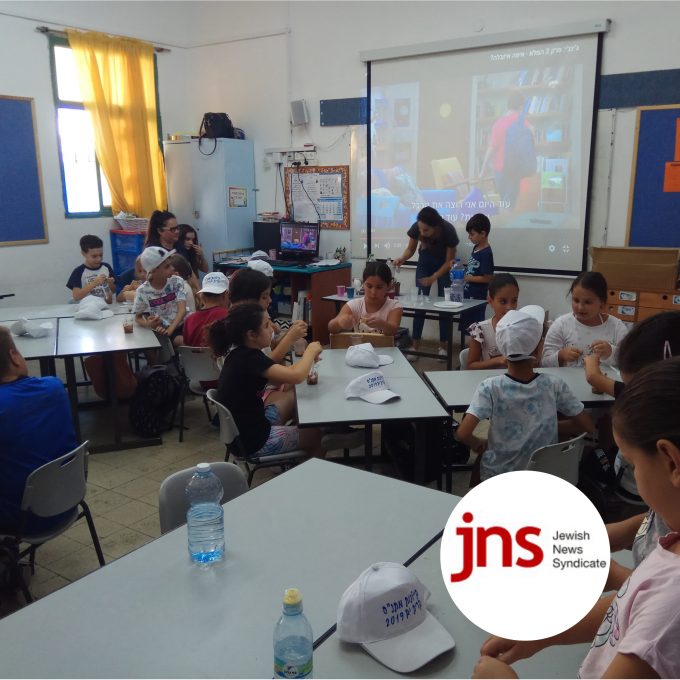August 24, 2007 Students excellence impresses judges at Weizmann World ORTs inaugural Excellence Prize for accomplished scientific and technological studies has been awarded at the Weizmann Institute of Science to a high school graduate for his work on developing an algorithm to solve equations. Daniel Gabay, 18, whose Argentinean grandparents helped found kibbutz Metzer where he lives, submitted a work titled Algorithm Efficiency in the Complex Plane and the Analysis of a Dynamic Algorithm for Solving Equations. World ORT set up a seven-strong committee, chaired by the Head of Weizmanns Chemical Physics Department, Professor Shimon Vega, to assess the five finalists for the first prize of a $5,000 scholarship towards undergraduate study. The prize is funded by the UK-based Kennedy Leigh Charitable Trust and World ORT and representatives of both organisations sat on the adjudicating panel. Professor Vega said Daniel had produced a beautiful piece of work. He wrote in a clear and comprehensible style showing that he knew what he was talking about. The presentation of the material was also very didactical, instructive and elegant. I discussed his work with mathematicians and they had a very strong feeling that he did a fine piece of work, Professor Vega said. Daniel, who is in the second month of nine years service in the Israeli armys elite Talpiot programme, said it had been a big surprise to win. I really love maths, the graduate of the Israel Art and Science Academy in Jerusalem said. But its really complicated to explain something youve worked on for a whole year. So I didnt really know if theyd understand me. Excellent students (from left): Naveh Levanon, Daniel Gabay, Avinoam Arbiv, Yevgeny Kinev, and Danielle Tzachor. Daniels project surveyed the efficiency of known algorithms in different circumstances before detailing the development of his own dynamic algorithm, which is a mathematical method of solving equations quickly. The need to solve equations in almost every area in science points out the significant practical application of the methods for solving them, he explained. To the best of my knowledge, there isnt any algorithm that can enable a scientist to jump over unwanted solutions and find only a specific one except for the one Ive developed. Professor Vega said that all five finalists had displayed an enormous effort and motivation. All five were at a very high level. I was surprised how these kids could get to such a level. The language of all the works was professional, the general outlook more than reasonable and the general structure of the tasks professional, he said. So it was hard to decide which was best the differences between them were not enormous. In joint second place were ORT Givat Ram student Yevgeny Kiner and Gymnasia Realit student Danielle Tzachor. Yevgenys study was titled Genetic Therapy of Cancer through the Knockdown of the H19 Gene and Danielles was Characterisation of Dark-Induced Senescence in Arabidopsis and its inhibition by Gibberellic Acid. In joint fourth place were Avinoam Arbiv of the Ohel-Shem High School in Ramat Gan and Naveh Levanon of the Israel Arts and Science Academy. Navehs study was titled Computerised system for Gender Recognition in Speech using a Neural Network and Avinoams was titled The Characterisation of the Gene IPT7 and the Examination of its binding site to the Protein STM. Professor Vega said: I believe in excellence. Were not all the same someone who excels in music will not necessarily be good at woodwork. And World ORT has this kind of approach to look for excellence in different fields. The Kennedy Leigh Charitable Trust was established by the late self-made millionaire Michael Kennedy Leigh in 1967, the son of Jewish immigrants to the United Kingdom. The trust, 75 per cent of whose annual allocations go to Israeli beneficiaries, supports a wide range of projects in education, medical research, the arts, coexistence, sport and other fields. World ORT is the worlds largest Jewish education and vocational training non-governmental organisation and has benefited more than 3 million people Jewish and non-Jewish in 100 countries since its foundation in 1880.

Excellence Prize awarded at Weizmann Institute
24.08.07




